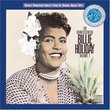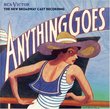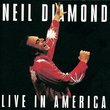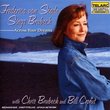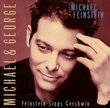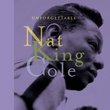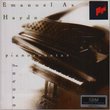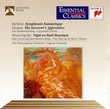| All Artists: Ludwig van Beethoven, Artur Balsam, Bela Bartok, Franz Rupp, Lili Kraus, Rudolf Serkin, Wilhelm Kempff Title: Ludwig Van Beethoven: "Spring" and "Kreutzer" Violin Sonatas Members Wishing: 0 Total Copies: 0 Label: Andante Release Date: 4/8/2003 Genre: Classical Styles: Chamber Music, Historical Periods, Classical (c.1770-1830), Modern, 20th, & 21st Century, Instruments, Strings Number of Discs: 3 SwapaCD Credits: 3 UPC: 699487109025 |
Search - Ludwig van Beethoven, Artur Balsam, Bela Bartok :: Ludwig Van Beethoven: "Spring" and "Kreutzer" Violin Sonatas
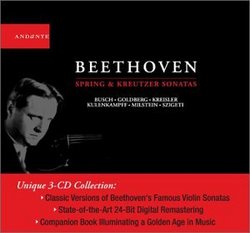 | Ludwig van Beethoven, Artur Balsam, Bela Bartok Ludwig Van Beethoven: "Spring" and "Kreutzer" Violin Sonatas Genre: Classical
This three-CD set showcases Beethoven's most famous Violin Sonatas in multiple performances by some of the 20th century's greatest violin/piano duos. A virtual master class in Golden Age interpretation, this collection fea... more » |
Larger Image |
CD DetailsSynopsis
Album Description This three-CD set showcases Beethoven's most famous Violin Sonatas in multiple performances by some of the 20th century's greatest violin/piano duos. A virtual master class in Golden Age interpretation, this collection features three performances of the "Spring" Sonata and four of the "Kreutzer" Sonata, ranging from Georg Kulenkampff and Wilhelm Kempff's "Kreutzer" in 1935 to Nathan Milstein and Arthur Balsam's "Spring" in 1950. The set also includes the celebrated 1940 "Kreutzer" performance at the Library of Congress by Joseph Szigeti and Bela Bartók. To recapture the magic of these performances for a new century, rare, pristine 78s were transferred and 24-bit digitally remastered using the state-of-the-art CAP 440 technique. The 112-page, three-language companion book features classic photos of the performers and evocative images of the composer, as well as an introduction by Pulitzer Prize-winner Tim Page, an insightful contextual essay by Jed Distler ("Reading Between the Musical Lines") and detailed artist biographies from The New Grove Dictionary of Music and Musicians. Similar CDs
Similarly Requested CDs
|
CD ReviewsBeethoven's Spring and Kreutzer Sonatas Robin Friedman | Washington, D.C. United States | 12/03/2003 (5 out of 5 stars) "This 3-disc CD compilation features outstanding historical performances of Beethoven's two most widely-known sonatas for violin and piano: the "Spring" sonata and the "Kreutzer" sonata.
The recordings were remastered from old 78's and date from between 1935 and 1950. I think that performance style, especially on recordings, was more individualized among artists than is the case today. Recordings were more expensive to own and bulky to store. Retakes were difficult. Historical recordings tend to have a more spontaneous character, personal to the performer, where mistakes in an original take cannot simply be redone and covered over. There seems to be as well a great deal of heart and romanticism in these recordings which may be lost in modern performance styles.Beethoven's sonata in F-major opus 24, the "Spring" sonata was published in 1801 and advertised at the time as a sonata for the piano with violin obligato. For all that, the work is well-balanced as between the two instruments. This is a flowing, lyrical work from Beethoven's first period and reminds the listener of Beethoven's ability to compose beautiful melody. The first movement consists of a lyrical, expansive initial theme followed by a second, energetic, theme which dips into the minor key. The second movement is a slow, reflective lyric, reminding me of Schubert, set over a piano accompanyment in broken chords. The third movement is a very short, rhythmically complex scherzo while the finale is a rondo with a singing theme reminiscent of the opening movement.There are three performances of the "Spring" in this complilation: by Fritz Kreisler and Franz Rupp (1936), Szymon Goldberg and Lili Kraus (1936) and Nathan Milstein and Arthur Balsam (1950). It is a joy to hear these different performances and to compare the approaches of the artists to this music. The Milstein-Balsam performance is the closest of the three to contemporary style. But I was won over by the spontaneity and sweetness of Kreisler's violin in the first version, and by Lili Kraus' piano in the second version. In Kreisler-Rupp, the piano seems to take almost the role of accompanyment (contrary to the way Beethoven conceived the sonata) while in Goldberg-Kraus the two performers play as partners.Beethoven's sonata in A-major, opus 47, the "Kreutzer" is a work surrounded by legend. Beethoven completed it in 1803 and dedicated the work to a violinist named Bridgetower, with whom Beethoven premiered the work. After Beethoven and Bridgetower had a falling-out, Beethoven rededicated the work to Kreutzer (1766-1831) a French virtuoso performer and a noted composer in his own right. Kreutzer never played the work which immortalized his name. Leo Tolstoy wrote a famous story, "The Kreutzer Sonata" which has since become inextricably linked with the music for which it is named. This is virtuoso, flamboyant music dating from the beginning of Beethoven's second, "heroic" period. It is an expansive work in which both the piano and violin parts are showy and difficult. Beethoven's original title-page for the work describes it as in "a very concertante style, almost like a concerto." The first movement of this work, with its slow introduction for the violin in double and triple stops, its sweeping piano arpeggio which introduces the main portion of the movement, and the two contrasting themes of the movement with their development make a work for violin and piano like no other. There is great use of contrasts between loud, bravura passages for both instruments, long runs, striking pizzacato, and contrasting, intense quiet passages. The second movement is a florid set of variations which I think a fitting complement to the opening movement. The third movement is a lively, whirling and difficult tarantella that Beethoven appropriated from an earlier work he had planned.There are four wonderful performances of the Kreutzer on this CD: Kreisler and Rupp (1936); Kulenkampff and Kempff (1935); Szigeti and Bartok (1940); and Busch and Serkin (1941). These recordings all differ among themselves and offer endless perspectives on this music. Again, I was struck by the sweetness and expressiveness of Kreisler's playing. But the collaborations between Szigeti and Bartok playing the piano at the Library of Congress and Busch and Serkin are classics in themselves. I have long been an admirer of Kempff's piano and enjoyed his performance here as well with Kulenkampff, a violinist I didn't know.The CD comes with excellent program notes by Jed Distiller, helpful biographies of the performers, and interesting photos of Beethoven, the performers, and Kreutzer.This would not be the best choice for a new listener just coming to this music. I would recommend that a new listener get a single version of these works, listen to them repeatedly, and combine this with an attempt to gain familiarity with a good variety of art music. For those who have loved this music for a long time, however, there is no better choice. These are two great works performed by some of the finest violinists and pianists of our time. These performances will enhance one's knowledge of the music and afford endless listening." |

 Track Listings (12) - Disc #1
Track Listings (12) - Disc #1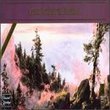
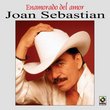

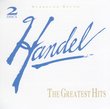
![Vivaldi's Ring of Mystery [With CD]](https://nationalbookswap.com/cd//m/30/0730/80730.jpg)
